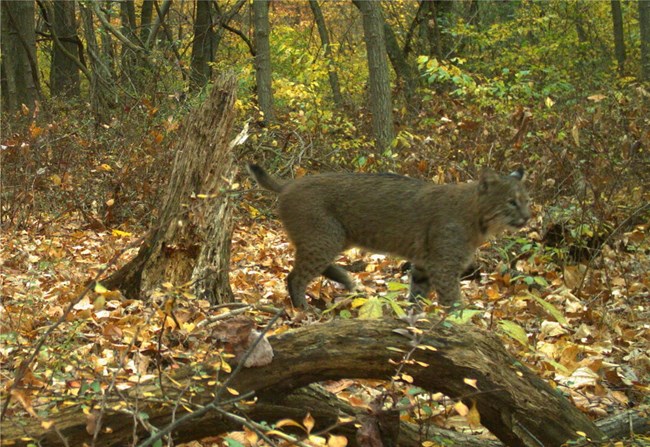
NPS - Catoctin Mountain Park *** Please remember that hunting and trapping are not permitted in the park.*** Mammals found in the park are fairly typical for this region and include skunk, groundhog, squirrel, several varieties of vole and mole, eastern cottontail rabbit, opossum, raccoon, white-tailed deer, and red fox. Recent sightings of bobcat, beaver, mink, and black bear indicate that populations of these mammals have returned to the area. In 2001, a small mammal survey was done for the park. This survey by the Smithsonian Institute, confirmed the presence of 12 small mammals within the park. This survey also revealed a new species to the park, a coyote! The coyote was photographed using a motion sensitive camera set up by the researchers. Coyotes had never before been documented at Catoctin Mountain Park. Since then, several other coyote observations have been made indicating this species has in fact become established in this section of Maryland. Historical records indicate that mammals such as bison, elk, gray wolf, eastern cougar, porcupine, and fisher could at one time be found in the area. However, these animals have all since been extirpated from the park as well as much of the surrounding area. 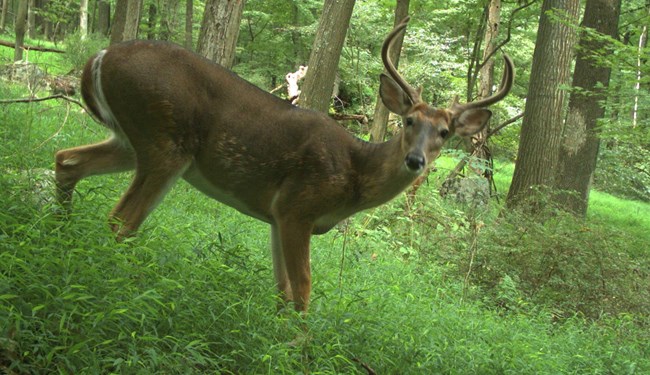
NPS - Catoctin Mountain Park White-tailed Deer White-tailed deer are the most abundant large animals in the park. They can weigh between 50-300 lbs. However, deer in the park are normally about 100 lbs. Males, also called bucks, are about 20 percent larger than females, which are called does. Males grow antlers which fall off each winter and grow back in the summer. Bucks fight over territory in the fall by using their antlers. Their fur is usually grayish brown in winter and reddish brown in summer. White-tailed deer make their beds in grass, leaves, or snow. When startled, they may snort and raise their tails as "white flags" as they bound away. The white-tailed deer are herbivores and feed on leaves, twigs, nuts, berries and fungi. They also graze on grass or crops such as corn and soybeans. They usually move in small herds of females with young or bachelor males. Catoctin Mountain Park is actively working to manage the deer population within the park. See the latest news on our deer management.
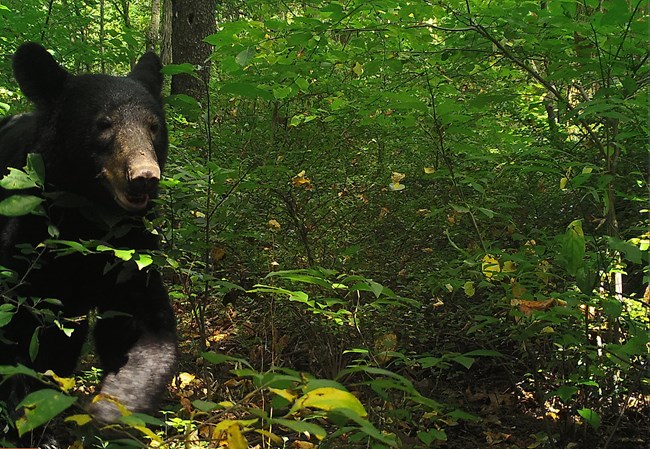
NPS - Catoctin Mountain Park Black bear In the 1990s, black bears returned to Catoctin after a twenty year absence. The black bear is the largest animal in Maryland. Adults typically weigh between 125 and 400 pounds. Their color varies from brown to black. They have good eyesight and hearing, but rely heavily on their excellent sense of smell to locate food. Bears will eat almost anything. Common foods include berries, acorns, hickory nuts, grasses, insects, fish, and carrion. They are also attracted to garbage, agricultural crops, and bird food placed in back yard feeders. This sometimes brings bears in conflict with humans. Bears tend to be wary of humans, and will often flee when they hear you approach... Remember they are wild and should never be fed or harassed. If you encounter a bear, stay calm, do not approach it or run away. Avoid direct eye contact and do not panic if the bear stands on its hind legs. Remain upright, back away slowly and leave the area. Seeing a bear in the wild is an exciting experience. If you use common sense and good judgment, you can safely enjoy the natural beauty of this forest animal at a safe distance. 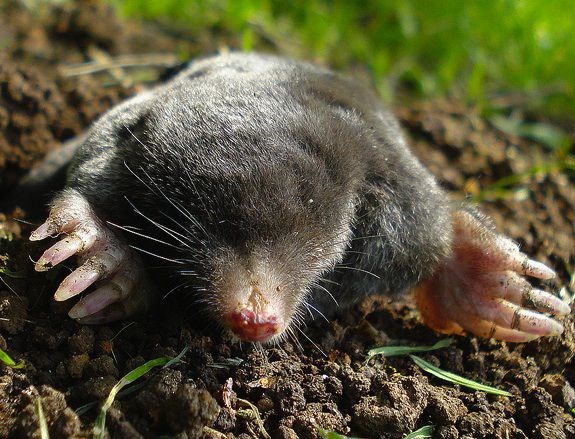
Smithsonian Magazine Moles Moles are some of the mammal species in the park that do not hibernate through the winter months. During late fall through early spring moles will remain active, tunneling deeper underground. They will do this in order to stay beneath the frost line 30 inches below the surface, this allows them to continue to feed their voracious appetite. When temperatures begin to warm, moles will begin to tunnel closer to the surface. Moles will eat up to half their own body weight in food daily, and their diet primarily consists of invertebrates such as earthworms and insects.Essentially blind, only being able to distinguish light from dark, moles rely on their incredible sense of smell to locate prey. Their sense of smell is so sensitive that it enables them to take indivdual scents seperately from each nostril allowing them to smell in stereo similar to how binocular vision functions. 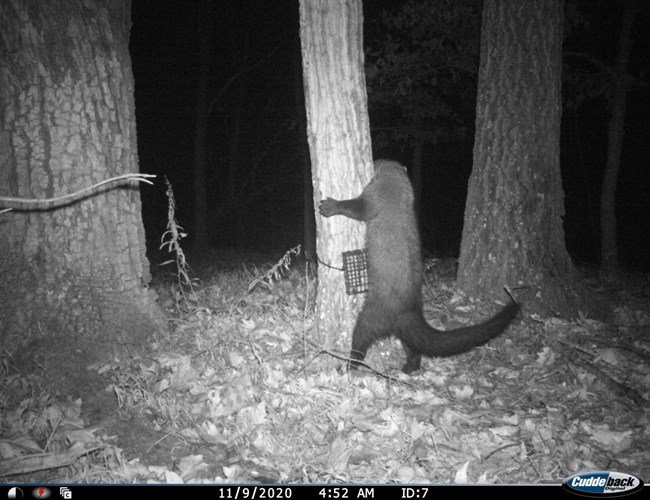
NPS Photo/Chesapeake and Ohio National Historical Park The fisher (Pekania pennanti) is a swift-moving, tree climbing, member of the weasel family and can often be confused with related, smaller species such as mink. They are up to 30-40 inches long and weigh 8 to 12 pounds at maturity. The fisher has thick dark brown/black fur and a substantial tail. They were driven to the edge of extinction in Maryland in the mid-1800’s due to the loss of their habitat: large tracts of mature forest where they den in tree cavities. Male fisher home ranges approach 30 square miles, females about 12 square miles. Catoctin Mountain Park is just over nine square miles. They are opportunistic predators that feed on small mammals such as squirrels, rabbits, mice, voles, and other rodents, and also carrion, fruits, nuts, birds, and frogs. They typically do not feed on fish, as the name would suggest. They are one of the few animal species that will prey on porcupines. There is currently a game camera survey going on with hopes to catch a glimpse of a fisher within Catoctin Mountain Park. There was one seen in a mammal survey in Cunningham Falls State Park, and a possible sighting on route 77 near the headquarters area. Their home ranges are large, so there probably aren’t very many, if they are staying here. If you would see what you think may be a fisher, please let the park know. When informing the park provide a description of what you saw, where and when (and of course a picture if you can get one). |
Last updated: March 15, 2021
